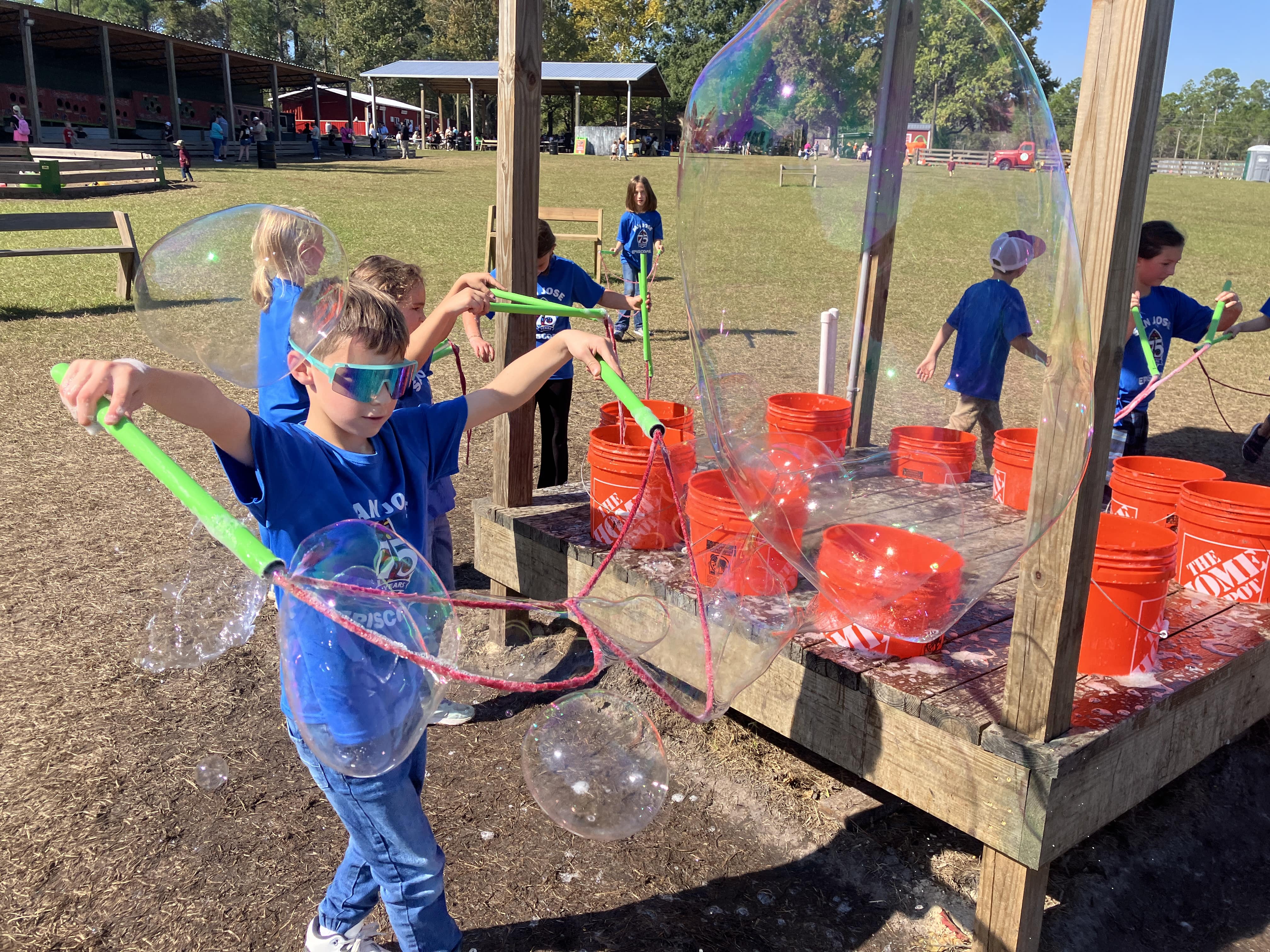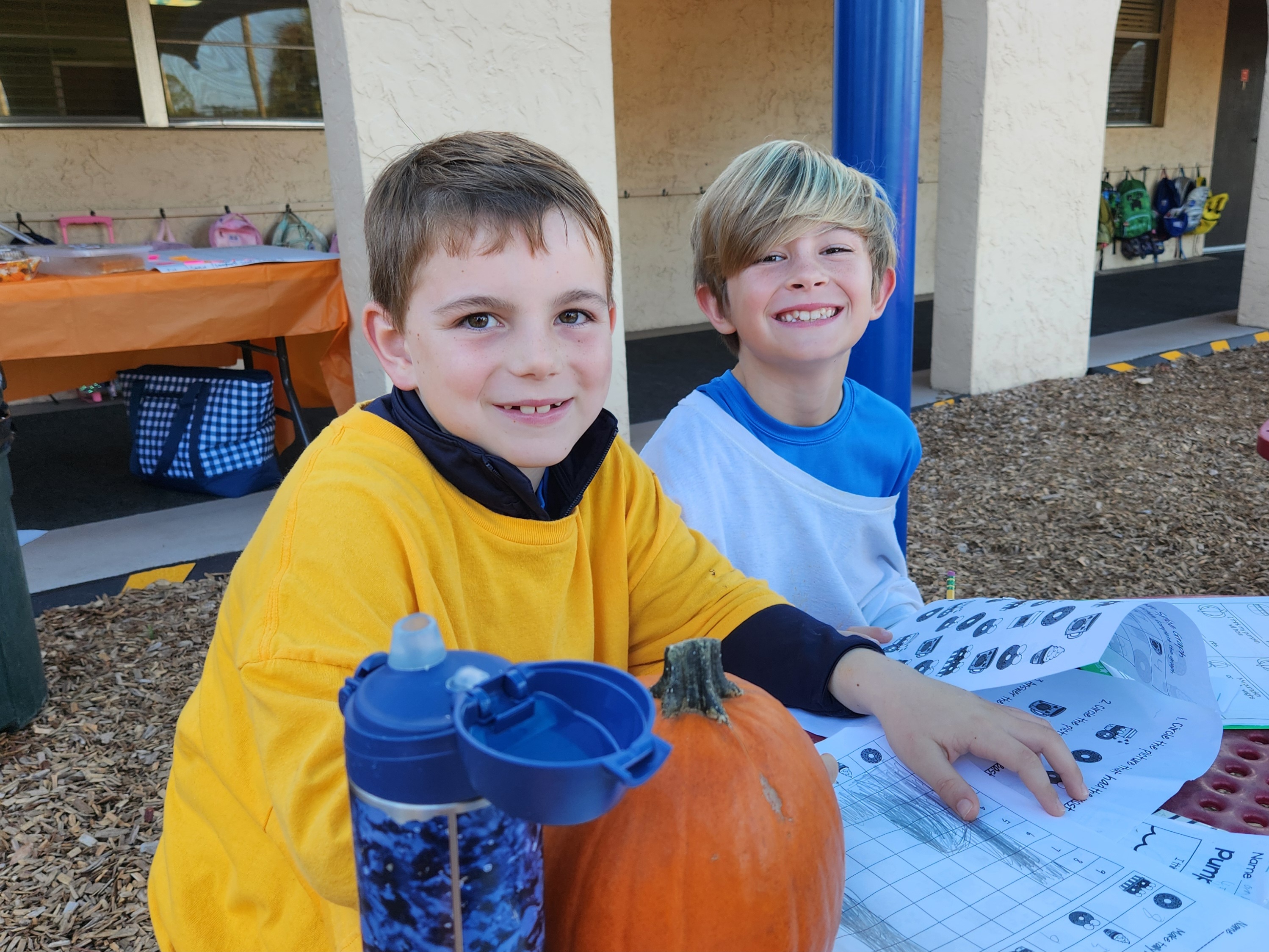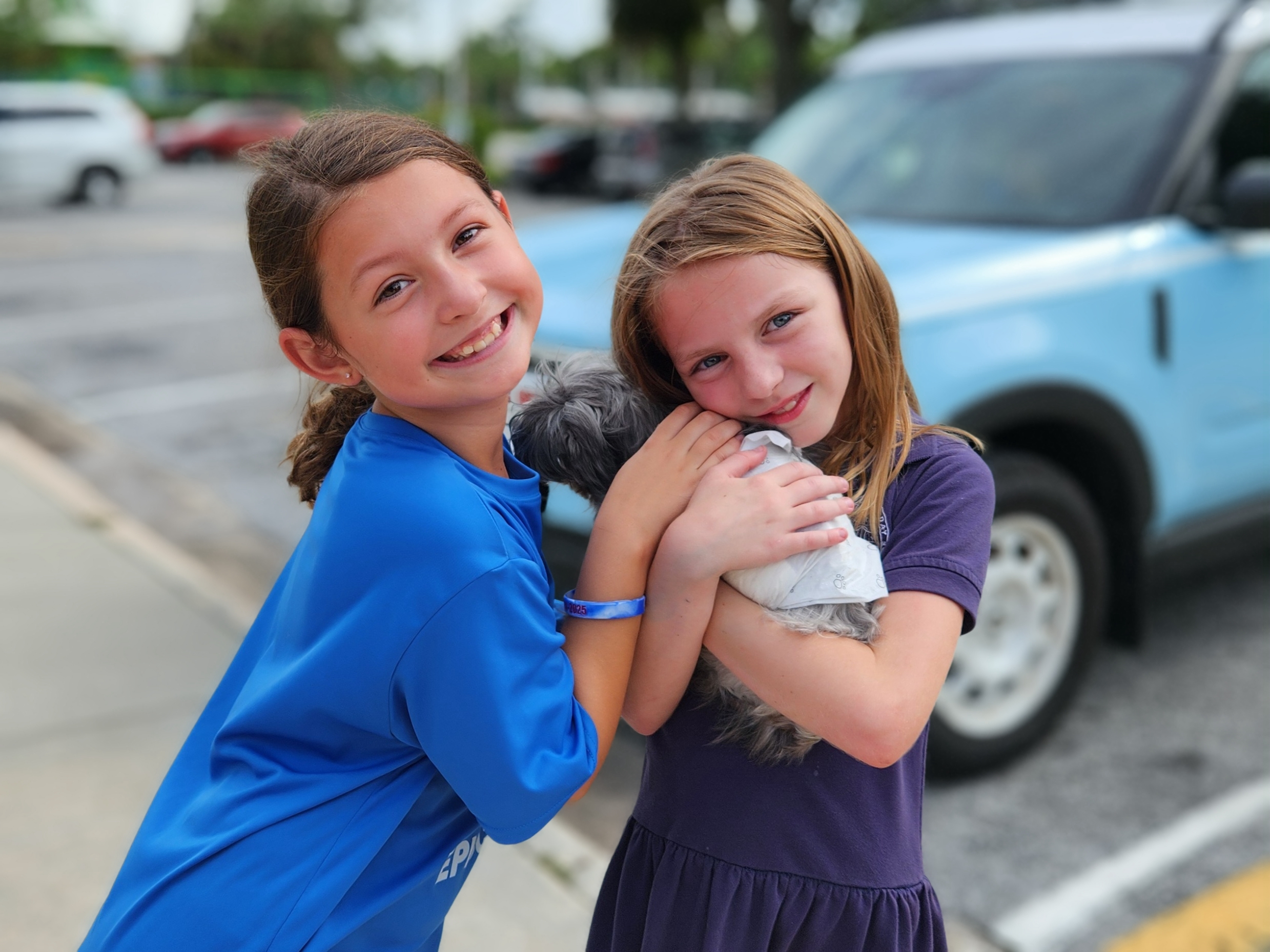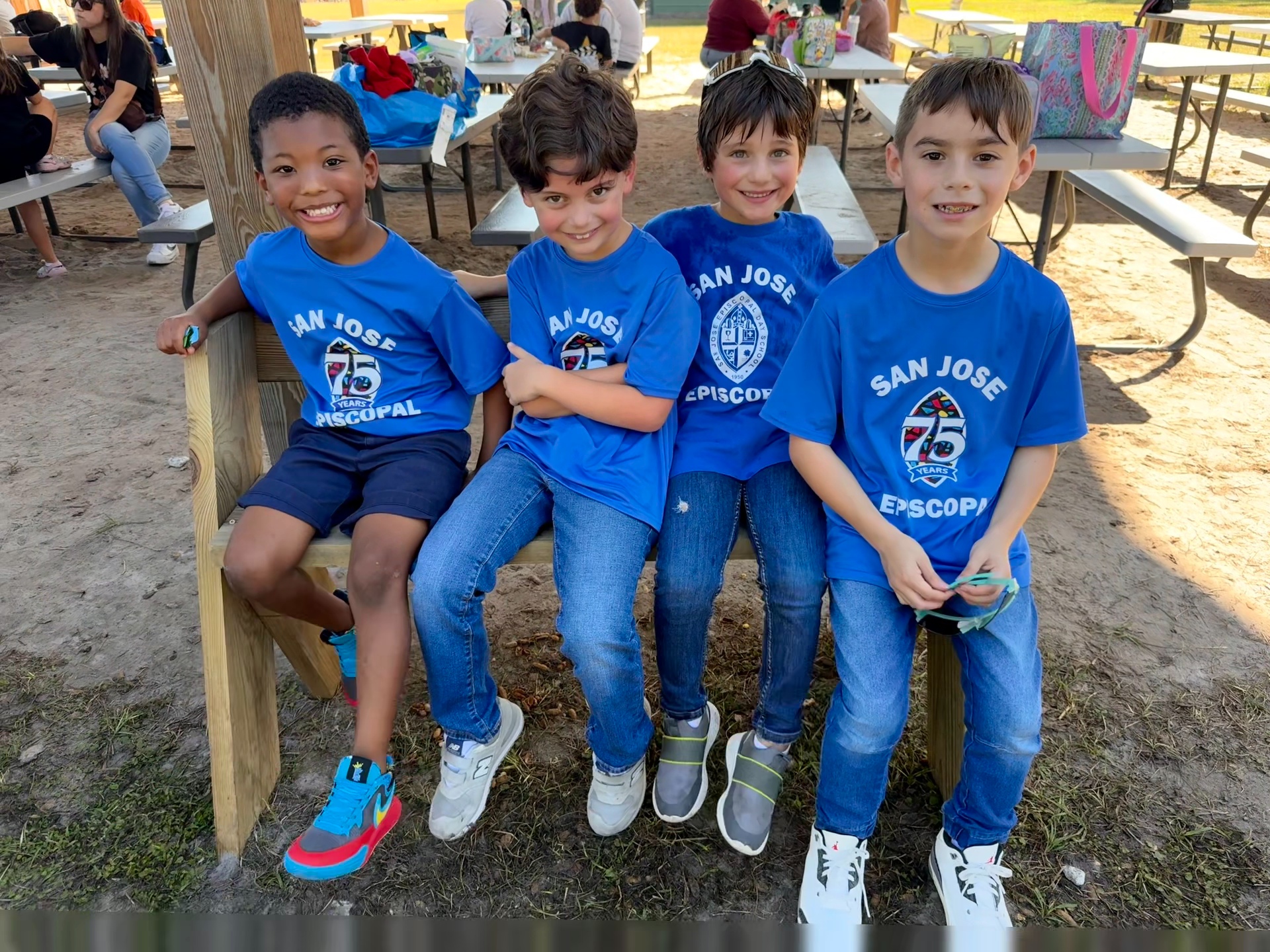
Second Grade Curriculum
In second grade, students make an extraordinary leap forward as readers. With a solid foundation in phonics and word analysis, they tackle increasingly complex texts with fluency, expression, and confidence. They explore the rich world of literature, diving into their favorite chapter books, where they are building their reading stamina and their familiarity with the structures and elements commonly found in different genres. Students compare characters’ perspectives, notice figurative language like similes and idioms, and analyze how authors use words to create mood and meaning. From poetry and fantasy to biographies and informational texts, their reading lives expand across a wide array of genres, building both comprehension and curiosity. Each new book becomes a launchpad for thoughtful discussion, connection-making, and wonder-filled discovery.
As critical thinkers, second graders learn to dig beneath the surface of the texts they read. They analyze central ideas and important details, interpret an author’s purpose and opinion, and evaluate how text features—like captions, maps, and glossaries—enhance their understanding. They compare texts on similar topics, synthesize information, and begin to research using multiple sources to answer questions. These skills empower students to not only understand what they read but to engage with it intellectually, forming and articulating their own ideas about what they’ve learned. Academic vocabulary grows rapidly as students draw on context clues, word parts, and reference tools to understand and use sophisticated language with precision and confidence.
In writing, second graders blossom into purposeful, expressive communicators. They craft narratives that reflect real or imagined experiences, use their voices to write compelling opinion pieces, and present clear, well-organized informational texts. With guidance and support, they learn to plan, revise, and edit their work thoughtfully, applying the conventions of grammar, punctuation, and spelling to polish their ideas. Students use digital tools to publish writing and enhance their work with multimedia elements, learning that writing is not only a process but a powerful means of expression. By the end of the year, our second graders are self-directed readers and writers, who express themselves with clarity, depth, and heart.
Skills & Understandings:
- Apply grade-level phonics and word analysis skills to decode unfamiliar words accurately and confidently
- Read fluently with expression, demonstrating accuracy, automaticity, and appropriate pacing in grade-level texts
- Identify and describe key story elements, plot structure, and the theme in literary texts, including recognizing different characters’ perspectives
- Retell literary and informational texts using a logical sequence of events, main ideas, and relevant supporting details
- Analyze text features (titles, headings, captions, graphs, maps, glossaries, and illustrations) to deepen understanding and meaning
- Identify central ideas and supporting details in informational texts, and explain an author’s purpose, opinion, and supporting evidence
- Compare and contrast important details across two texts on the same topic or theme to build comprehension and critical thinking
- Interpret figurative language, including similes, idioms, and alliteration, to develop a richer understanding of text
- Use a growing vocabulary, including academic language, and apply strategies such as using context clues, word parts, and reference materials to understand new words
- Write clear and organized narratives, including personal and fictional stories with a logical sequence, transitions, and a conclusion
- Write opinion pieces with reasons supported by details from sources, clear transitions, and a thoughtful conclusion
- Write informative or expository texts that include a topic introduction, relevant facts, transitions, and a concluding statement
- Plan, revise, and edit writing with support from adults and peers, improving both mechanics and content
- Use digital tools and multimedia elements to produce, publish, and enhance writing and oral presentations, and present information using clear speech and complete sentences
Throughout their second-grade journey, students engage in challenging, hands-on math instruction that solidifies a deep understanding of number sense, operations, place value, measurement, data, and time. They master addition and subtraction within 100 using a variety of strategies—number lines, hundreds charts, base ten blocks, compensation, and partial sums—moving from concrete tools to abstract reasoning. Students build fluency with facts within 20 and apply their skills to solve complex one- and two-step word problems, identifying key information, selecting strategies, and justifying their thinking. As their number sense expands, they explore place value within 1,000, learning to count, compare, read, and write numbers, and apply this knowledge to add and subtract three-digit numbers with regrouping and decomposing. Throughout the year, they model with mathematics, use tools strategically, and demonstrate persistence and critical thinking. Students estimate and measure using both metric and customary tools, applying operations to solve real-world measurement problems. They represent and interpret data through tally charts, picture graphs, bar graphs, and line plots, answering and generating questions based on patterns in the data. Finally, they learn to tell time to the nearest five minutes across multiple formats and solve practical problems involving money. Each unit challenges students to reason deeply, communicate clearly, and see mathematics as a powerful tool for understanding their world.
Skills & Understandings:
- Understand the value of each digit in a three-digit number
- Accurately and fluently solve addition and subtraction problems with two- and three-digit numbers
- Understand what it means for equations to be equal on both sides
- Demonstrate a foundational understanding of multiplication as repeated addition
- Use tools to measure how long things are and solve real-life problems involving length
- Read clocks to the nearest five minutes and solve word problems involving money
- Understand what fractions represent, like halves and quarters
- Recognize and describe 2D shapes, and identify lines of symmetry
- Learn what perimeter means and how to measure the distance around a polygon
- Collect, categorize, represent, and interpret data using appropriate titles, labels, and units
In second grade, the Connell Family Wonder Lab—known as The Wonder Lab—becomes an exciting space where students grow into more independent scientists, engineers, and problem-solvers. Grounded in the Next Generation Science Standards (NGSS) and enriched by the ISTE Standards for technology integration, the program fosters empowered learners who observe the world with curiosity and wonder.
Students investigate the properties of matter by exploring solids, liquids, and gases, classifying materials based on observable characteristics such as flexibility, texture, and weight. They deepen their understanding of motion by examining how different forces—including pushes, pulls, and gravity—affect the movement of objects.
Life science units inspire students to explore the diversity and interdependence of living things. They study plant and animal life cycles, discovering how offspring resemble their parents while also showing variation. Investigations into pollination, seed dispersal, and adaptations help students understand how plants and animals interact with their environments to meet their needs. Acting as knowledge constructors and global collaborators, students also examine habitats—from forests and oceans to deserts and backyards—while engaging in conversations about how humans impact the natural world.
In Earth and space science, students act as computational thinkers as they collect data about changing weather and build models to represent landforms and water features. They explore how wind and water shape the land and design solutions to minimize these effects, applying real-world engineering practices. Through hands-on experimentation and digital tools, they record observations, track patterns, and compare results to build a deeper understanding of Earth’s systems. Whether building erosion barriers or simulating cloud formation, students think critically, collaborate effectively, and communicate their ideas with creativity and clarity.
Second graders in The Wonder Lab are not just learning science—they are doing science. They design experiments, test predictions, revise their ideas based on evidence, and use technology with purpose and responsibility. This program nurtures imaginative, resilient thinkers who delight in asking big questions and uncovering insightful answers through active exploration, design, and reflection.
Skills & Understandings:
- Observe, measure, and describe objects and materials, noting properties like size, shape, color, texture, weight, temperature, magnetism, and whether they sink or float
- Classify materials as solids, liquids, or gases, based on how they look and behave
- Notice patterns in how weather changes daily and seasonally, such as temperature shifts and precipitation, and discuss these changes
- Learn how wind and water shape land, comparing different ways (like dikes or vegetation) to slow or prevent erosion
- Build models of land and water features, such as rivers, hills, and lakes, to show how Earth’s surface is structured
- Understand that water exists in different places on Earth and can change between liquid and solid forms (ice)
- Explore forces by showing how stronger pushes or pulls make objects move or change direction more dramatically
- Raise questions and investigate the natural world together, gathering data through exploration and teamwork
- Recognize that Earth is made of many types of rocks, differing in size, shape, and other properties
- Observe the life cycles of plants and animals, such as butterflies and beans, and appreciate how offspring resemble parents but are not identical
- Recognize that living things inhabit specific habitats because each environment meets their basic needs
- Learn how plants and animals depend on each other, including connections like pollination and seed dispersal
- Compare the variety of life in different habitats, noticing similarities and differences among ecosystems
- Plan and conduct simple investigations, gathering evidence, analyzing results, and explaining what they learn
- Use the engineering design process: define a problem, sketch or build models, test ideas, compare outcomes, and improve solutions
In second-grade social studies, students begin to think more deeply about history, geography, civics, and economics as they explore the story of America and their place in it. They examine primary and secondary sources, use maps, globes, and research tools to answer historical questions and build an understanding of how the past shapes the present. Students learn that Native Americans were the first inhabitants of North America and compare the cultures of different tribes across regions. They explore how immigration has impacted the country—from the arrival of early settlers to the significance of Ellis Island and the Statue of Liberty—and examine how immigrants continue to shape American culture today. As they study Colonial America, students begin to understand how daily life has changed over time and why people have come to the United States throughout history. In geography, they use various types of maps to locate continents, oceans, countries, and capitals, including their hometown, Florida, and North America.
Students are also introduced to basic economic concepts such as supply and demand, trade, saving and spending, and the idea that resources are limited. In civics, they learn the purpose of government, the rights and responsibilities of U.S. citizens, and how to demonstrate patriotism and responsible citizenship at the local and state levels. Along the way, they become familiar with key American symbols, civic leaders, and founding documents, such as the Constitution, helping them grow into thoughtful, informed citizens with a deep connection to their country and community.
Skills & Understandings:
- Examine primary and secondary sources as well as media center resources, technology, and reference tools to answer historical questions
- Understand that Native Americans were the first inhabitants of North America and compare the cultures of Native American tribes from different regions
- Describe the impact of early immigration on Native Americans and early America
- Identify reasons people came to the United States historically and continue to immigrate today
- Understand the historical significance of Ellis Island and the Statue of Liberty
- Explain the cultural contributions of immigrants in American society today
- Explore how daily life in Colonial America changed over time
- Locate hometown, state, and national capitals, and North America on maps and globes
- Identify and label continents, oceans, and key global features (Equator, Prime Meridian, Poles)
- Locate major countries in North America, including the U.S., Canada, Mexico, and the Caribbean
- Understand that people make choices because resources are limited
- Explain supply, demand, trade, and the role of consumers and producers
- Discuss the benefits and costs of saving and spending
- Understand why people form governments and how the U.S. government protects citizens' rights
- Demonstrate knowledge of responsible citizenship, patriotism, national symbols, influential individuals, and key documents such as the Constitution
Schedule a Tour
Come see for yourself why SJEDS is an investment in a brighter future.









